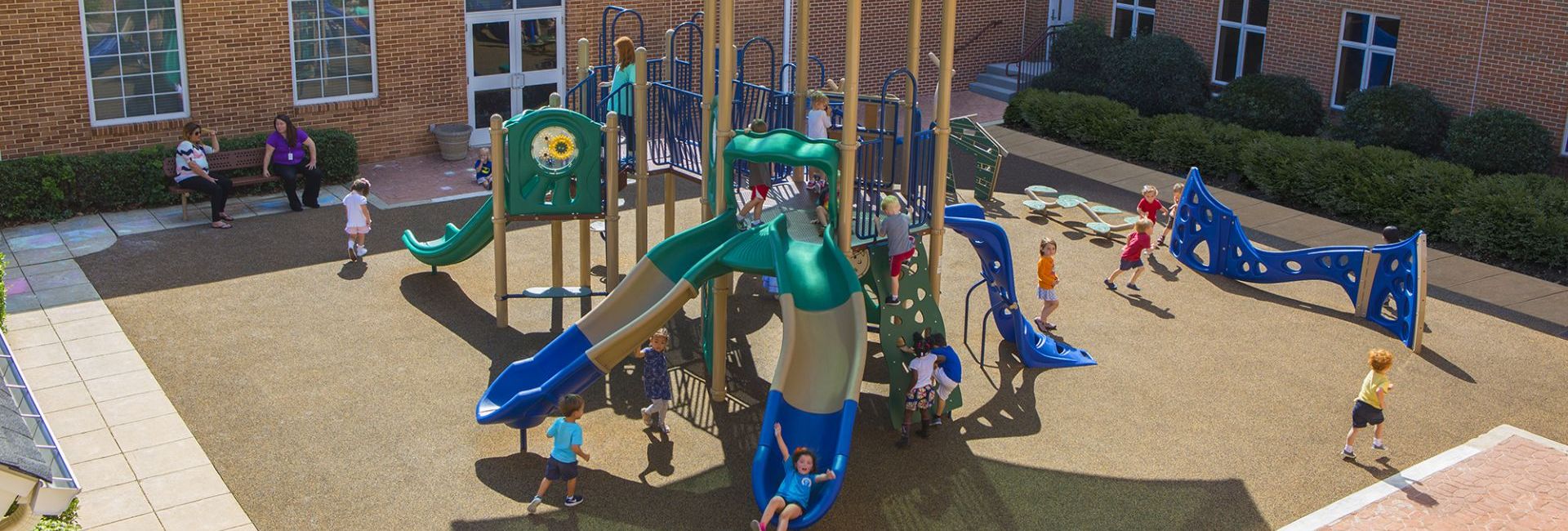Preserving and Protecting your New Playground
So, you have purchased and installed a brand new playground for your facility. Congratulations, your job is complete, right? Well…maybe not quite yet.
Once you have opened the playground up for the first time the joy and excitement of this new space will inspire continuous use by community members of all ages. Over time, this steady use will subject the structure to a great deal of force and movement, both vertically and horizontally, potentially requiring connection points to be adjusted and tightened. Additionally, depending on the type of safety surfacing under your playground, loose-fill surfacing may need to be topped-off to maintain the correct depth and attenuation properties. Click to find out more information on poured in place rubber cost and comparing playground surface types.
Why should you maintain your new playground? There are two very good reasons to do so: first, you have made a significant investment on new equipment. When purchasing a new car, you probably wouldn’t drive it indefinitely without changing the oil, rotating the tires, and getting regular servicing. While playgrounds do not involve regular oil changes, they do require visual inspections to determine potential safety hazards and to manage risk. Second, your new playground helps promote community values and positive play experiences for children. By creating timely, routine inspections and implementing them on a monthly, quarterly, and yearly basis, you are demonstrating your commitment to the safety of children and families in your community.
Exactly what is involved in designing a playground maintenance program? What kinds of checkpoints should be on these plans? Here is an example of some factors to consider:
Inspections should be routine, timely, and followed up with action.
Tip: Design the program to be consistent with the manufacturer’s instructions when available and take into account environmental conditions.
Have a system in place that ensures an appropriate response to hazards.
Tip: Daily or high frequency inspections may help with responding to the dynamic play environment.
Successful programs require a comprehensive commitment.
Tip: When necessary, bring in outside vendors to perform inspections and/or do technical repairs.
Practice complete documentation
Tip: Keeping detailed records of maintenance and repairs is essential for a sound maintenance program and risk control.
Now that you have a plan for creating your maintenance program, how frequently should you perform inspections? Because play equipment and surfacing are subject to wear from use, abuse, and climate, they must be inspected on a regular basis. The frequency of inspection will be determined by many factors, including equipment age, usage, materials, and external factors. Regardless of the site-specific attributes of the playground, two types of inspections should be performed on all playgrounds:
Low Frequency inspections are often performed quarterly or semi-annually, and are in-depth examinations of the equipment and surfacing to determine wear and tear.
High Frequency inspections are often performed daily or weekly, and look at changing conditions caused by use, weather, and/or vandalism.
Well-maintained playground equipment can help children to develop cognitively, physically, communicatively, socially, and emotionally in a safer environment. Along with helping to promote children’s development, a quality maintenance program has many positive outcomes. Maintained and groomed play environments are a source of pride for the community. Taking good care of the playground equipment and maintaining a beautiful environment is an expression of your community’s values.
For more information about playground maintenance, or to set up an outreach program for CEU credits, please contact your local recreation consultant.
Resources:
NRPA-National Recreation and Park Association – www.nrpa.org/cpsi; 800-626-6772
IPEMA – International Play Equipment Manufacturers Association – www.ipema.com; 888-944-7362
NPPS – National Program for Playground Safety – www.uni.edu/playground; 800-554-7529
ASTM- ASTM International – www.astm.org; 610-832-9500
CPSC- Consumer Products Safety Commission – www.cpsc.gov; 800-638-2772

